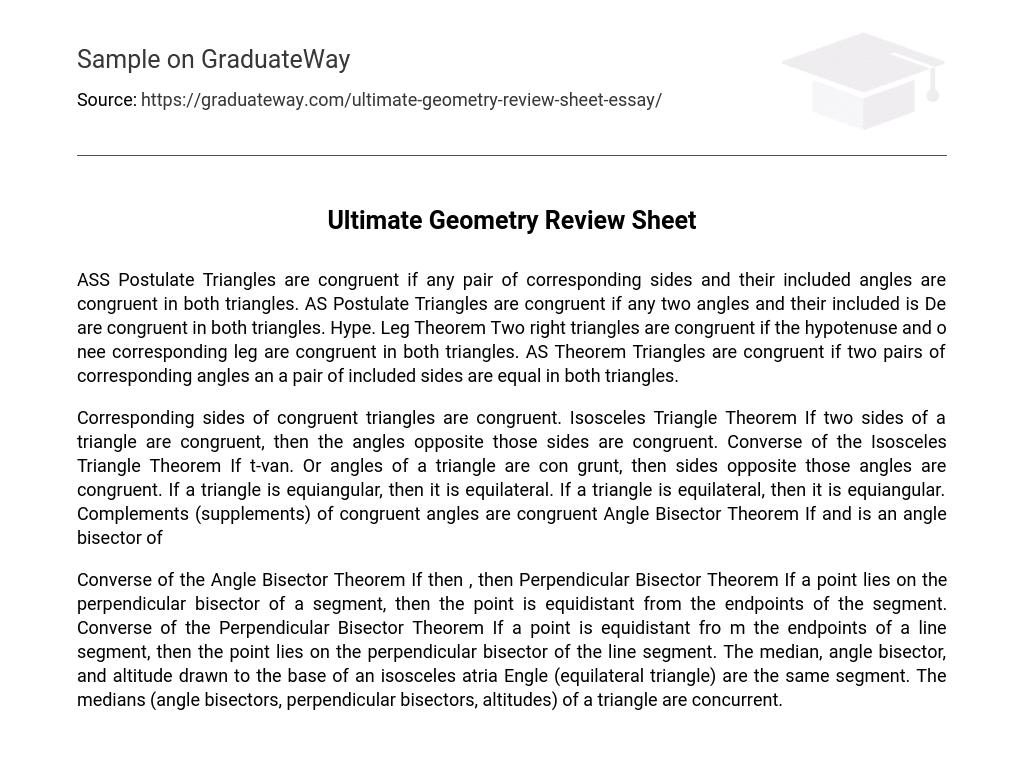ASS Postulate Triangles are congruent if any pair of corresponding sides and their included angles are congruent in both triangles. AS Postulate Triangles are congruent if any two angles and their included is De are congruent in both triangles. Hype. Leg Theorem Two right triangles are congruent if the hypotenuse and o nee corresponding leg are congruent in both triangles. AS Theorem Triangles are congruent if two pairs of corresponding angles an a pair of included sides are equal in both triangles.
Corresponding sides of congruent triangles are congruent. Isosceles Triangle Theorem If two sides of a triangle are congruent, then the angles opposite those sides are congruent. Converse of the Isosceles Triangle Theorem If t-van. Or angles of a triangle are con grunt, then sides opposite those angles are congruent. If a triangle is equiangular, then it is equilateral. If a triangle is equilateral, then it is equiangular. Complements (supplements) of congruent angles are congruent Angle Bisector Theorem If and is an angle bisector of
Converse of the Angle Bisector Theorem If then , then Perpendicular Bisector Theorem If a point lies on the perpendicular bisector of a segment, then the point is equidistant from the endpoints of the segment. Converse of the Perpendicular Bisector Theorem If a point is equidistant fro m the endpoints of a line segment, then the point lies on the perpendicular bisector of the line segment. The median, angle bisector, and altitude drawn to the base of an isosceles atria Engle (equilateral triangle) are the same segment. The medians (angle bisectors, perpendicular bisectors, altitudes) of a triangle are concurrent.





